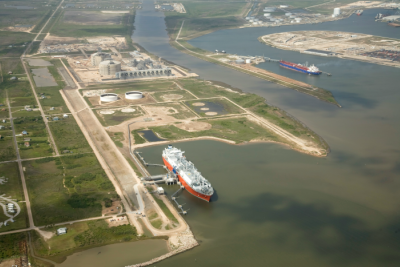Freeport LNG commences FEED for proposed fourth liquefaction train
HOUSTON — Freeport LNG Development, L.P. announced the filing by it and its wholly owned subsidiary, FLNG Liquefaction 4, LLC, of a formal application with the Federal Energy Regulatory Commission (FERC) for authorization to site, construct and operate a fourth liquefaction train (Train 4) at its LNG export facility located near Freeport, Texas.
 |
| Photo courtesy of Freeport LNG. |
FLNG also announced that it was commencing the front-end engineering and design (FEED) for Train 4. The proposed Train 4 is being designed with a nominal production capacity of 5.1 MMtpy. Freeport LNG anticipates being ready to commence construction of Train 4 by the end of 2018, with operations commencing as early as 2022.
"With today's initiation of formal FERC review and commencement of FEED work, Freeport LNG is moving forward with the final stages of Train 4 development," said Michael Smith, Chairman and CEO of Freeport LNG. "Following closely on the heels of our successful development of the initial three trains of the Freeport Liquefaction Project, Train 4 will position Freeport LNG to supply the next wave of US Gulf Coast LNG."
The initial three liquefaction trains of the Freeport Liquefaction Project are currently under construction, and are scheduled to commence operations sequentially between Q4 2018 and Q3 2019. Each liquefaction train has a capacity in excess of 5.0 MMtpy. Approximately 13.4 MMtpy of the production capacity from the first three liquefaction trains has been contracted under use-or-pay liquefaction tolling agreements with Osaka Gas Co., Ltd., JERA Energy America LLC, BP Energy Company, Toshiba Corp. and SK E&S LNG, LLC.

- ExxonMobil halts 1-Bft3d blue hydrogen project in Texas
- Aramco and Yokogawa commission multiple autonomous control AI agents at Fadhili gas plant
- Ukraine will resume gas imports via Transbalkan route in November
- Mitsubishi to inject $260 MM into Brunei LNG project
- Freeport LNG (U.S.) on track to take in more natgas on Thursday after unit outage



Comments